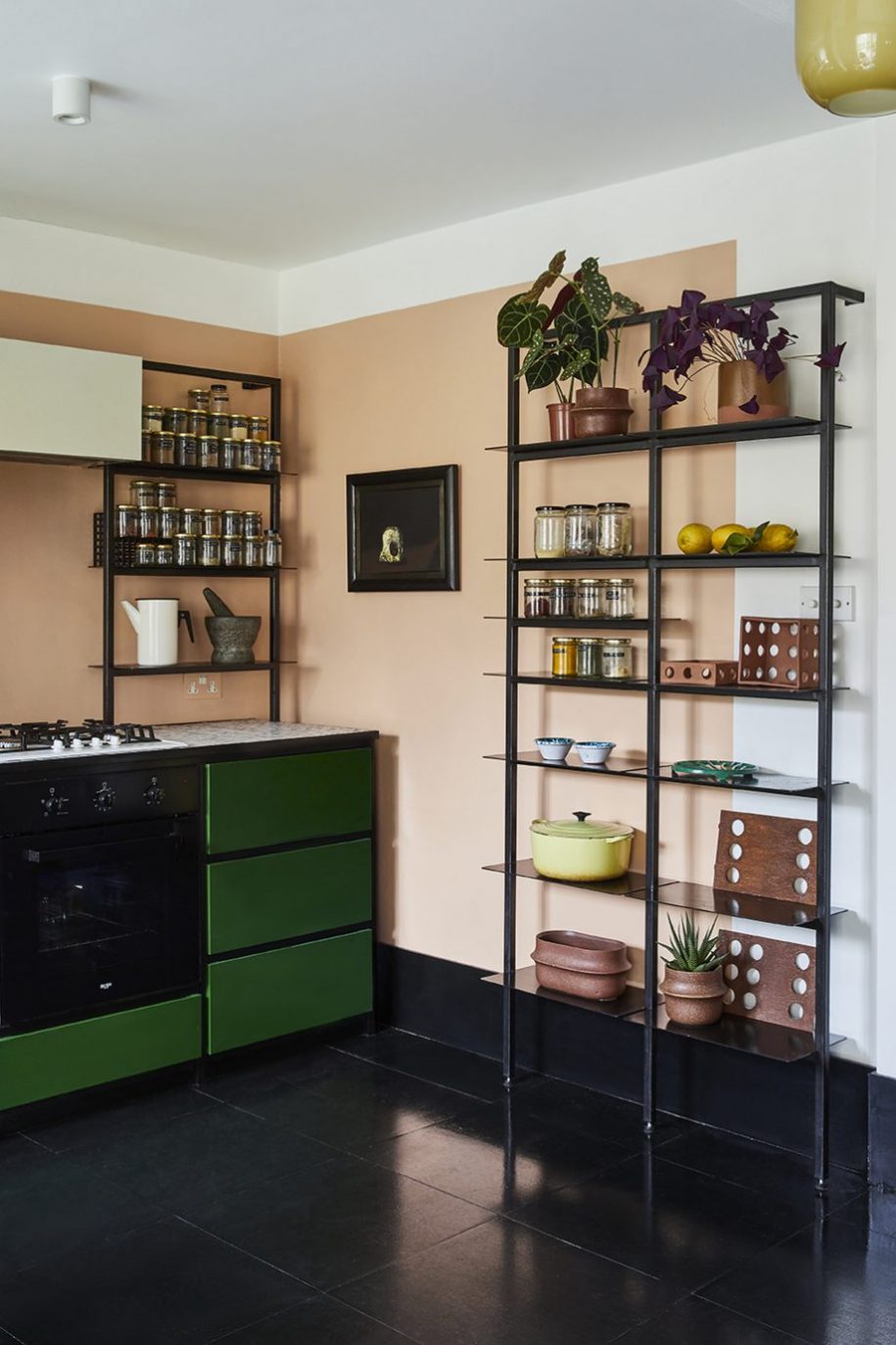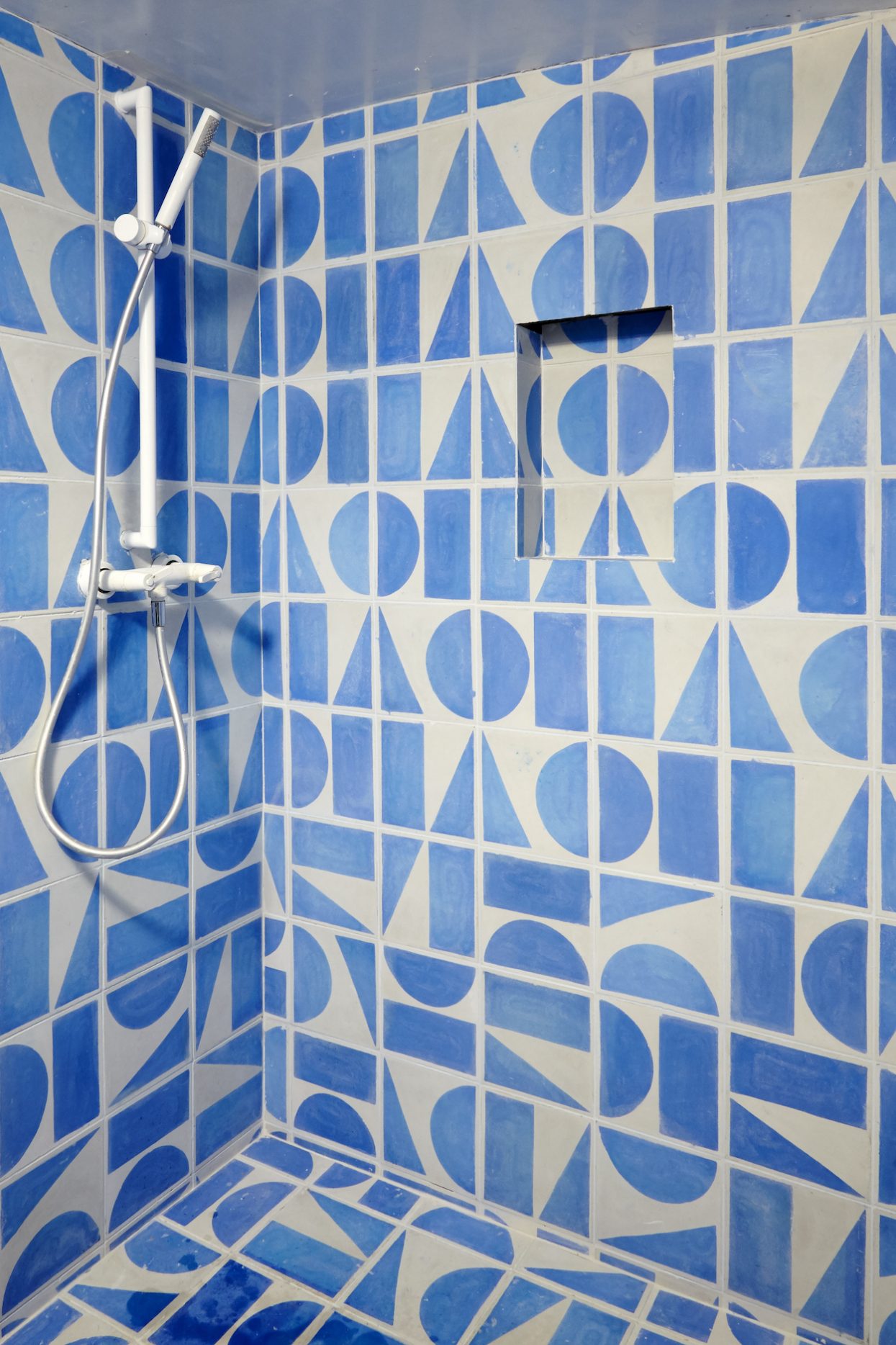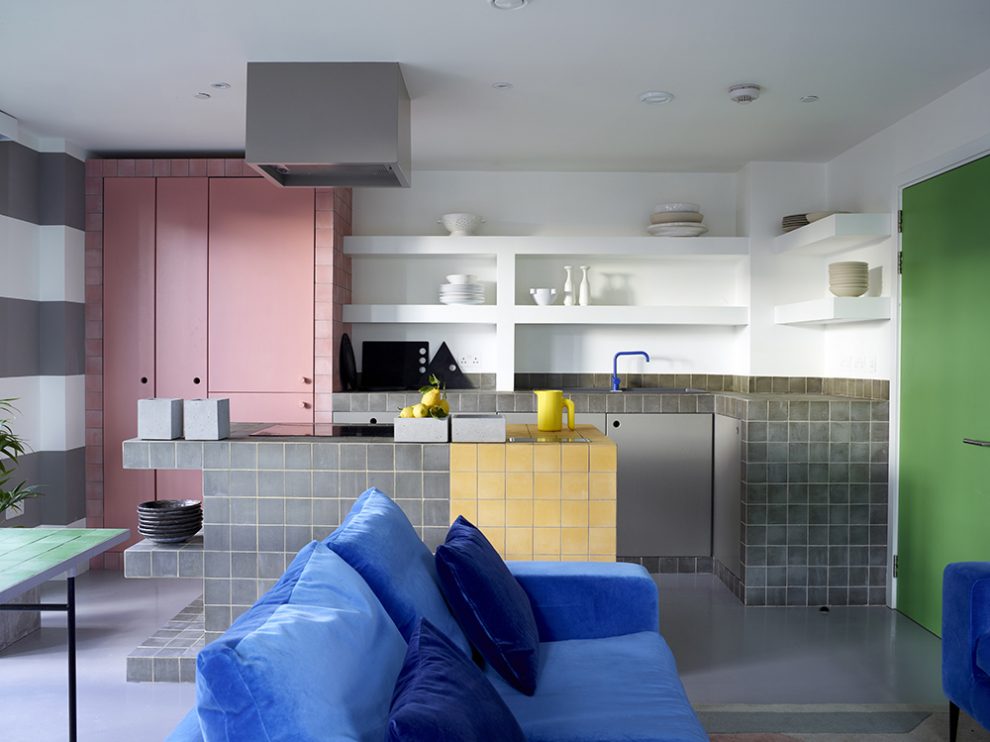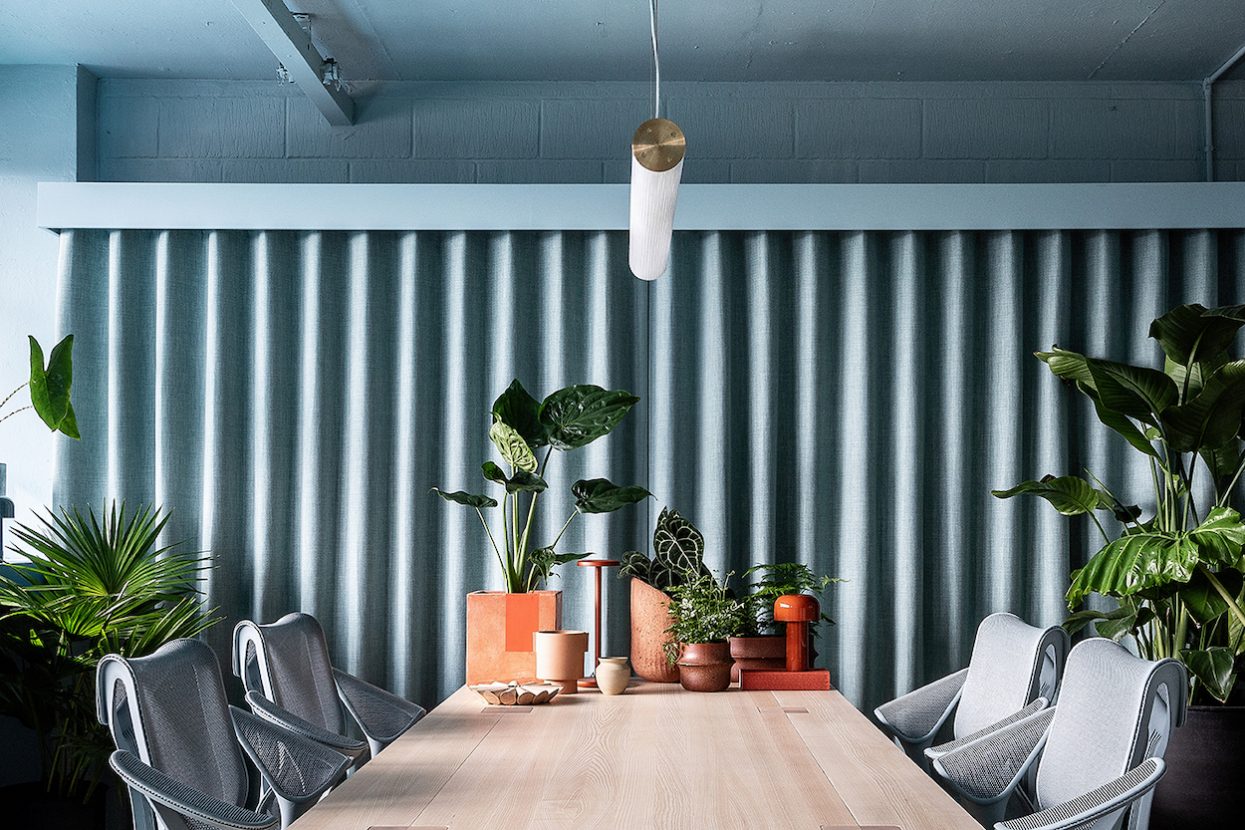Here, we ask designers to take a selfie and give us an inside look at their life.
Occupation: Creative director.
Instagram: @studio_rhonda, @darkroom_london
Hometown: London.
Studio location: East London.
Describe what you make: I design and curate spaces, furniture, objects, textiles, and prints. Sometimes I’m designing a small object, such as a chopping board, and sometimes I design the kitchen and the whole house it will live in. Often for clients and often for my brand/store, Darkroom. I love the mix of client-based work with all its problem solving and collaborative aspects contrasted with the more self indulgent process I can employ when designing products for Darkroom.
The most important thing you’ve designed to date: Everything I’ve designed has been part of my journey in how I design the next thing, so it’s all important in a way. Designing my store Darkroom back in 2009 has been the biggest springboard to what I do now. I’d trained as a graphic designer and had a branding and art direction consultancy before that, so opening a design store was a huge shift. The conceptual interior, product curation and merchandising concept was quite radical and attracted lots of attention and enquiries for working with other brands. My consultancy work now with Studio Rhonda has a different aesthetic to Darkroom, but they go hand-in-hand too!
Describe the problem your work solves: On the surface, my work is fairly decorative, which can have negative connotations to design purists, but actually the core of everything I design is functionality. Even if I’m designing a decorative wall print, it needs to function as a stimulating element in a space. The stimulation needed is part of my inner brief. Does this piece need to be a calming element, or dialed up to be something more effervescent? I have a strong belief in the power that good design has on one’s emotions. Creating objects and spaces that bring sparks of joy to life is priceless to me.
Describe the project you are working on now: I’m working on a large office space in Oxfordshire, the HQ of a company that designs pet products. The building is a huge renovated Victorian malt house. I’m creating a space for their team to feel excited about coming back into the office after two years of working from home. I’m bringing all the rigor of my residential projects to how I’ve treated the materials palette and design concept. It’s a softer and warmer looking space than you’d expect from a traditional office. I’m using biophilic design principles of bringing nature indoors by the use of natural materials and planting.
A new or forthcoming project we should know about: I’m currently working on some furniture that incorporates the new colorways of my tile collaboration with Bert & May. I designed the Split Shift series back in 2016 and the endless pattern possibilities this collection offers has seen the tiles take up home in many kitchens and bathrooms across the world which has been incredible to see. The new colorways, inspired by natural materials and palettes, really change the vibe of the tiles. I want to house them in smaller furniture pieces so that people who don’t own their homes (and can’t do structural decorative works) can still be part of the Split Shift crew!
What you absolutely must have in your studio: Peace. Snacks. Plants. Good people and sometimes my dog!
What you do when you’re not working: Walk my dog! It’s endless… but so good for me. This year I’m really trying to see more of creative London too. I’m literally drinking exhibitions.
Sources of creative envy: I always envy architects. I’d love to design my own home from the ground up.
The distraction you want to eliminate: Admin. I have a form of ADHD, so the struggle is real! It’s the yin to my yang, and getting this aspect of my business flowing well requires a lot of work eliminating distractions.
Concrete or marble? Concrete. Big, bold, Brutalist concrete!
High-rise or townhouse? Can I have one of each please?
Remember or forget? I try to remember, not forget.
Aliens or ghosts? Ghosts. I love getting to grips with the history of any space I’m working in. It’s always part of the narrative I weave into my projects.
Dark or light? You can’t have one without the other.






